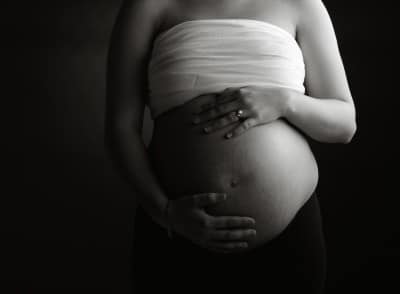As we’ve previously reported this year the UK approved a womb transplant program that was piloted in Sweden with successful childbirths to its credit. Now this special surgery may help infertile women in the United States as well, but with a slightly different protocol. The Swedish program uses wombs from relatives, often the recipient’s own mother. In the US – as well as the UK – the womb donors are either deceased or clinically brain dead.
Surgeons at the Cleveland Clinic did a “trial run” removing organs from a deceased woman in a delicate process, first taking the kidneys, and then carefully removing an organ that is rarely donated: the uterus. The 90-minute surgery was a practice event as they prepare to become the first US hospital and team to transplant a uterus into a woman who lacks one with the goal of her being able to become pregnant and give birth.
For Dr. Tommaso Falcone, chairman of obstetrics and gynecology at the Cleveland Clinic, a 2013 trip to Sweden was pivotal. He had read early research about uterus transplants more than 10 years earlier but was skeptical. In Sweden, Dr. Falcone watched the surgery and talked to couples who wanted it. He came to understand how much pregnancy meant to those couples and became determined to make a similar program possible at Cleveland Clinic. The clinic’s 15-member ethics board evaluated the research progress and took more than a year to produce a plan all could agree on. In the end, the final vote was overwhelmingly in favor.
In Cleveland, doctors will use deceased donors to avoid putting healthy women at risk. Surgeons will remove part of the donors vagina and other tissue needed to attach the uterus, and must tease away tiny blood vessels that carry urine from kidneys to the bladder. It’s tedious and time-consuming surgery but the organ can be removed more quickly from a deceased donor and if kept cold can survive outside of the body for up to eight hours.
As in all transplant cases, patients with a strong social support system tend to fare better. Candidates are interviewed to be sure they aren’t being pressured into the surgery and the doctors make sure they understand how truly arduous the process is. Potential uterus transplant recipients must have ovaries and must be in a stable relationship. They are screened for both relationship problems and psychological disorders that could interfere with their ability to cope with the surgery and recovery. Finances matter as well since the recipients will have to live in Cleveland for at least part of the time and will be responsible for their own food and lodging.
One in about 4500 newborn girls are born with ovaries but no uterus. Because of personal, cultural or religious reasons adoption and surrogacy may not be options for these women.
Cleveland Clinic will perform the removal surgery at least 10 more times before moving forward, but hope for enough success to make the operation readily available to women in the US. So far Sweden is the only country where uterine transplants have been successfully completed. Four of nine women who underwent the transplant at the University of Gothenburg have given birth to healthy – but premature – babies.
Potential recipients in the US will face the normal risks associated with any surgery and the additional risk of anti-rejection drugs for what some call unnecessary surgery not vital to save their lives. For eight women from various parts of the country who desperately want a child, the risk is worth it. They have already begun the screening process at the Cleveland Clinic, hoping they will be selected for the surgery.
These women were either born without a uterus or had to have it removed. Their transplants will be temporary, with the donor uterus removed after they’ve had one or two babies so they can stop taking the anti-rejection drugs. It’s a hopeful possibility for these women, who now anxiously await the go-ahead for their transplants on this new frontier of reproductive medicine.







